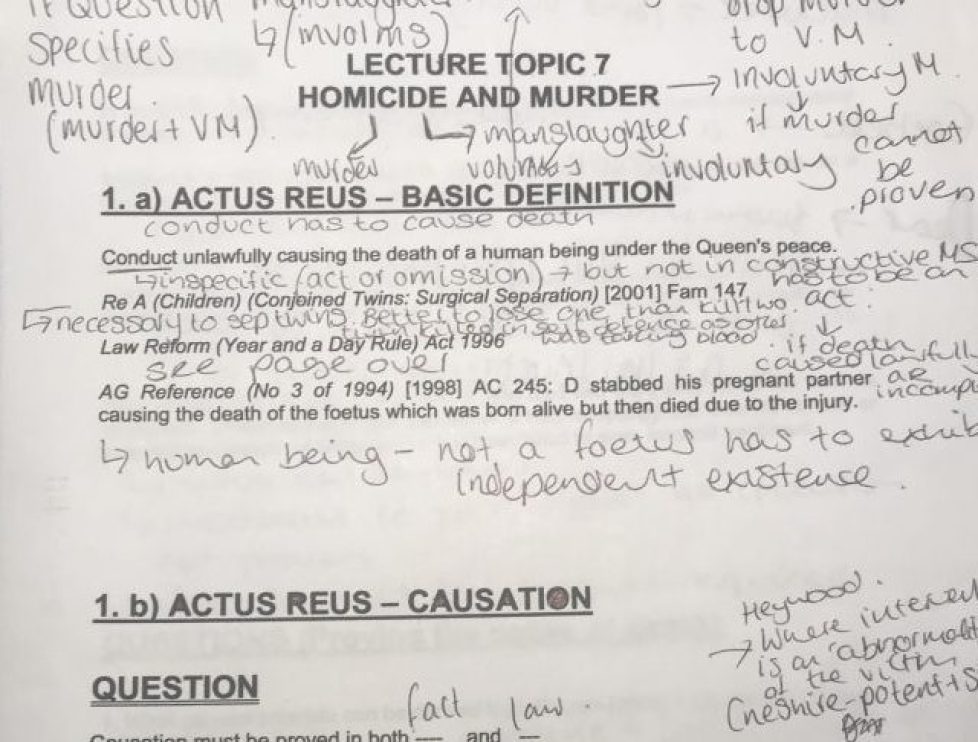At law school our teaching was focused preparing for two part exams which included essays and problem questions. Preparation for both was reasonably similar and it usually involved memorising hundreds of cases and building your understanding of the topic and themes. But problem-based learning (PBL) questions in an exam were always interesting as they were always an extreme dramatisation of a situation. For example, in Criminal Law the main character – let’s call him Ben – would go out of his house and every possible thing would go wrong for him (think car crash, roof caving in, being eaten by a dog and falling in a drain) all in one scenario. By definition PBL ‘is a total pedagogical approach to education that focuses on helping students develop self-directed learning skills’ (Major, 2001: PAGE). By placing emphasis on PLB the intention of the law school typically was to support students in ‘acquiring creative thinking skills as they tackle complex, interdisciplinary and real-situation problems’ (Awang and Ramly, 2008: 635).
IP has always been taught to law and business students and only more recently to creatives. In order to effectively portray some of the key legal elements to non-law students it is essential that IP teaching is relatable, accessible and inclusive. That is where the concepts I’ve learned through my problem-based learning experiences come in. In my work it is important that IP is positioned in an active role within a creative, practice-led space that encourages students to think critically and take practical and value-led approaches to real-world scenarios. During my time on the PGCert I’ve set myself the task of introducing some new PBL concepts into my IP teaching.
I like this quote from Steinemann which explores the scenarios that students might be faced with in industry, ‘they deal with multiple and often conflicting goals and values, work with constraints, and determine the most appropriate action to take, often in the absence of complete information or certainty’ (2003: 218). It makes me think about how we can best prepare UAL students for tackling IP related situations outside of university by providing them with open ended problems to tackle within our sessions.
The typical approach of PBL is problem presentation, problem investigation, problem solution and process evaluation (Shepard and Cosgriff, 1998). More reading, researching and planning needed to outline how I might effectively integrate PBL into my IP sessions. Updates to follow!
Reference list:
- Awang, H., and Ramly, I. (2008) Creative Thinking Skill Approach Through Problem Based Learning: Pedagogy and Practice in the Engineering Classroom. World Academy of Science, Engineering and Technology. 16(1), pp. 635-640.
- Major, C. (2002) Assessing The Effectiveness of Problem-Based Learning in Higher Education: Lessons from the Literature. vol 5(1).
- Shepard, A., and Cosgriff, B. (1998) Problem-based learning: a Bridge Between Planning Education and Planning Practice. Journal of Planning Education and Research. 17(1), 348-357.
- Steinemann, A. (2003) Implementing Sustainable Development through Problem-Based Learning: Pedagogy and Practice. Journal of Professional Issues in Engineering Education and Practice 29(4), pp. 216-224.
Image descriptions: Image 1 – learning the law through memorising case law example notes. Image 2 – an outline of two problem-based learning flowcharts. Image 3 – an example of a problem-based law exam question for torts.

